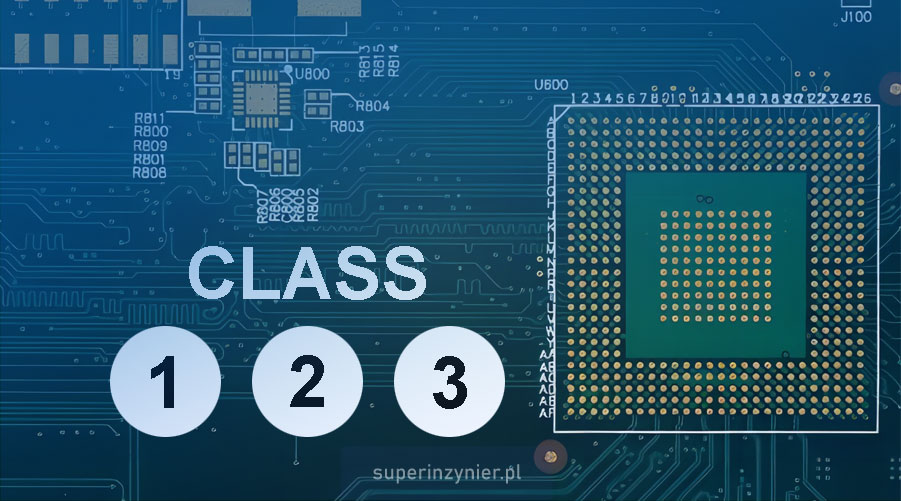IPC: Product classes in electronics
The international organization IPC (Association Connecting Electronics Industries) has developed a set of standards related to the electronics industry. Within these standards, electronic products are divided into three groups, called "classes"
Each of these classes has a specific definition, so that it is possible to correctly "classify" a given electronic product.
Depending on the class, the requirements are appropriately tailored to ensure reliable product performance while making common sense of the requirements for the quality of materials used, solder joints and many other aspects related to product performance.
IPC standards define three classes:
Class 1
General electronic products
The main requirement is the functionality of the entire assembly. Class 1 refers to products that have no special requirements for long-term reliability. Typical products are various disposable or low-budget solutions where the focus is on functionality rather than durability. Examples include electronic toys, low-cost consumer products, some home appliances, etc.
Class 2
Dedicated Service Electronic Products
Class 2 covers products where extended life is required, uninterrupted operation is expected but not critical. The environment in which such a device operates should not cause damage to the device.
That is, electronics in Class 2 should last longer than the typical warranty period, they should function in the environment they are designed for and a possible failure should not cause a health or life hazard. If something fails, we incur a higher cost, but there is no safety risk.
Class 2 is simply all professional electronics: computers, laptops, higher-end home appliances, audio-visual equipment, telecomm equipment, much of home and industrial automation, building lighting, some non-life-support medical equipment, etc.
Class 3
Dedicated Service Electronic Products
Class 3 is for products where operation is critical, any failure could end up with serious consequences (loss of health, life or huge financial losses). The operating environment can be very harsh (i.e., large changes in temperature, humidity, vibration, etc.) and a Class 3 product must operate despite the negative impact of this environment.
Class 3 is usually: life-support medical devices (respirators, pacemakers, etc.), automotive safety systems (ABS, EPS, ASR and others), some control systems in industry, energy, military, aviation and space electronics.
Class 3/A
Class 3/A is "a variant of Class 3" for space and military aviation applications. The requirements are specified in the final part of the IPC-6012 document, which deals with the manufacture of rigid PCBs. In IPC-6012E (version "E"), the Class 3/A requirements have been removed and are now available in IPC-6012ES (Space and Military Addendum). These requirements only apply if they are explicitly mentioned in the procurement documentation.
Who determines the class of the product?
IPC standards specify that the class of the product is determined by the User, who bears the ultimate responsibility for identifying the class.
Under this term "User" is someone who knows the requirements for the application of the product. Typically, a User is a customer (client) ordering the production of equipment in a given plant, and this very customer is to specify in which class the electronics are to be produced. It is also possible to make this aspect a little more clear in that the class is determined by someone who knows the application of the product. The user (customer), who owns the product or someone who owns the project and has the right to decide about it, has control over the design - the so-called "design authority".
If a user (customer) manufactures his products, then from the point of view of IPC he is both a user and a manufacturer. In this case, he determines the class of the product himself.
IPC standards allow the manufacturer to select a class when the user does not specify a product class. Such a situation is currently rare for electronic module assembly (according to J-STD-001, IPC-A-610). However, in the case of PCB manufacturing (according to IPC-6010, IPC-A-600) if the product class is not specified, the manufacturer can simply use Class 2 (e.g., according to IPC-6012E Section 1.3.3 and Table 1.2). So it is worthwhile to specify the PCB class accurately to avoid misunderstandings with the supplier.
Conclusions
IPC standards for product classes in electronics play an important role in ensuring product quality and reliability. Choosing the right class is crucial to meeting requirements, and the user (customer) is responsible for this aspect. It is worthwhile to ensure a clear record of the class to ensure proper communication of requirements with suppliers.




